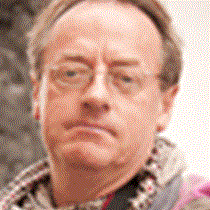What a wonderful day in this fair city! The Endeavour moored at Sir John Rogersons Quay in easy access of the heart of Dublin, Irelands’ capital city since 1204 AD. Historically its foundation dates back to the year 917 AD when Vikings from Norway established a small trading settlement on the south bank of the river Liffey. This small enclave endured and over the following centuries developed into the present modern metropolis. The city gets its name from the native Gaelic ‘Dubh Linn’, which in translation means ‘Black Pool’. This name originated from a small tributary stream, called the Poddle, which before entering the Liffey formed a deep dark pool or lake. The Viking settlers introduced for the first time in Ireland the concept of a town, a place where commerce, trades and crafts could be practiced. In the late twelfth century the Anglo-Normans, headed by one Richard Fitzgilbert de Clare, Earl of Pembroke, who was nicknamed Strongbow, took the town and thus its Scandinavian control came to an end.
After breakfast we visited Trinity College, which was founded by Elizabeth the first of England in 1591 AD, and viewed the magnificent early Christian manuscript known as the Book of Kells. This particular copy of the four Gospels in Latin has been described by specialists as one of the most accomplished expressions of illumination from the Early Christian period. The College itself boasts an impressive list of past students who were to rise to the upper echelons of fame including Oliver Goldsmith and Oscar Wilde. From here we made our way, in the company of our local based guides, to the National Museum of Ireland which houses one of the most impressive collections of Prehistoric and Early Christian artifacts in the World. Among these were the Tara Brooch, Cross of Cong and Ardagh Chalic. On our way to these venues we viewed the elegant vestiges of the erstwhile eighteenth century Georgian architectural splendour of the city which had been conceived on the drawing boards of such accomplished personages as James Gandon and Francis Johnson.
Our afternoon was spent at Glendalough in the Wicklow Mountains, some thirty miles from Dublin, among the ruins of the Early Christian monastery founded by St. Kevin in the sixth century AD. Originally this Saint was a hermit who had sought refuge from the distraction of his contemporaries in the solitude which was afforded by this glaciated valley and its environs. A number of his followers coerced him into founding a monastery here which was to develop into one of the most venerated of Holy sites on the entire island. Perhaps the most impressive building still extant on the site is the thirty three metre high round tower.




